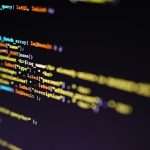The battle between the United States and China over technological supremacy intensifies with the latest developments in the AI chip sector. Huawei, a leading player in this arena, continues to advance its capabilities despite significant US-imposed restrictions. This struggle for dominance reflects broader geopolitical dynamics and the complexities of sustaining economic power in an increasingly interconnected world. Emerging information highlights the evolving strategies of both nations and their potential impact on global technological landscapes.
Huawei’s introduction of its Mate 60 Pro smartphone, which features advanced 7-nanometer chips despite comprehensive US technology restrictions, highlights the company’s defiance and innovative prowess. In a broader historical context, the United States’ tightening of export controls on AI chips seeks to contain potential threats to its technological leadership. Previous strategies have consistently focused on using export controls to manage technological exchanges, yet Huawei’s advancements have shown that innovation may still thrive under pressure. By applying unprecedented global restrictions, the US aims to safeguard its market position, raising questions about the efficacy and broader implications of such measures.
What Are the Implications of the Global Ban?
The Bureau of Industry and Security has introduced new guidelines that specifically target Huawei’s Ascend processors, an indication of the escalating nature of the US-China tech conflict. These restrictions extend beyond traditional export controls, which generally focus on what leaves a country, reaching into global jurisdictions. Such measures have sparked debates about sovereignty and international commerce, with concerns about how other nations should navigate this landscape. Independent businesses worldwide face tough decisions on aligning with US mandates or exploring alternative technological collaborations, especially considering that some countries may view these chips as cost-effective solutions.
Can Industry Stakeholders Adapt to Universal Controls?
The semiconductor industry‘s reaction to the US policies includes notable concern over expanded export regulations. Industry experts highlight the binary choice forced upon tech firms to select between US or Chinese platforms, further complicating existing global supply chains. Within this competitive framework, Huawei’s Ascend 910B chip reportedly achieves 80% efficiency of Nvidia‘s A100 when training large language models, showcasing potential technological parity. While the controls intend to preserve American dominance, they scarcely accommodate the nuanced growth that results from diverse, international research collaborations.
Will Innovation Thrive or Stagnate?
As tensions rise, influential voices in the tech industry caution against policies that may inadvertently stimulate innovation in isolated markets, potentially eroding American influence rather than preserving it. Huawei’s discretion about its Ascend chip developments, fueled by escalating sanctions, maintains intrigue among industry observers. Such opacity, coupled with limited information on production timelines or manufacturing specifics, underscores the challenges the US faces in managing these advancements while fostering collaborative innovation.Our understanding of Huawei’s secretive projects evolves alongside US strategy adaptations, forecasting potentially profound shifts in global competition dynamics over the coming years.
The pursuit of technological superiority remains an intricate dance of innovation and control. As governments weigh security needs against enabling competitive, cooperative platforms, a balanced approach that encourages international partnerships and superior technology may prove more sustainable. Policies that foster open competition without erecting artificial barriers are crucial to advancing global technological progress. The semiconductor industry’s evolution hinges on whether such collaborative networks can survive amidst rising tensions and geopolitical maneuvers.










